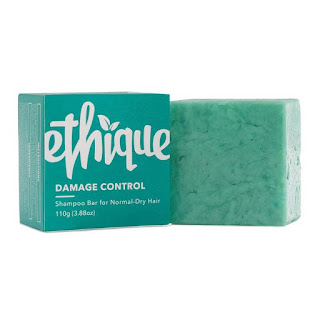Henbane
Henbane
Hyoscyamus niger
USDA Hardiness Zone
Henbane, Black Henbane, White Henbane, Devil’s eyes, Hogbean, stinking nightshade (Hyoscyamus spp.) [3]
Plant Information
Henbane, (Hyoscyamus niger), also called black henbane, hog’s-bean, or stinking nightshade, highly toxic plant of the nightshade family (Solanaceae), native to Eurasia and naturalized throughout much of the world. The dried leaves of henbane, and sometimes those of Egyptian henbane (H. muticus) and white henbane (H. albus), yield three medicinal alkaloids—atropine, hyoscyamine, and scopolamine—that can be purified for use in pharmaceuticals. The plants also are sometimes used in herbal and folk medicine. The leaves are used in illicit preparations of smoking mixtures and, in India, as a beverage. The plant can be fatal if eaten. [4]
Henbane plants have a branching taproot and feature large alternately arranged leaves with irregular lobes. The stems and leaves are covered in glandular hairs (trichomes), and the whole plant has a powerful nauseous odour. The showy funnel-shaped flowers have five cream to dark yellow petals with purple veins and dark centres. The fruit is a capsule with numerous black seeds. There are two forms of the plant, an annual and a biennial. The annual grows during the summer to a height of 30 to 60 cm (1 to 2 feet) and then flowers and sets seed. The biennial produces during the first season only a tuft of basal leaves, which disappear in winter and leave underground a thick fleshy root. The following spring, the plant produces a branched flowering stem, which is usually much taller and more vigorous than the flowering stems of the annual plants. [4]
Medical Use
Spasms of the digestive tract, including the stomach and intestines.[2]
Treating scar tissue, when the leaf oil is used on the skin. [2]
Henbane is possibly safe for most people when taken by mouth for a short time with the help of a healthcare professional. Side effects include dry mouth, red skin, constipation, overheating, reduced sweating, vision disturbances, increased heart rate, urination problems, drowsiness, restlessness, hallucinations, delirium, manic episodes, and death. [2]
Henbane is UNSAFE when used for self-medication. Since henbane can be very toxic, the dose must be carefully chosen and side effects checked by a healthcare professional. Too much henbane can cause poisoning and death. [2]
Preparation, dosage, toxicity
Henbane leaves and herbage without roots are chopped and dried and are then used for medicinal purposes or in incense and smoking blends, in making beer and tea, and in seasoning wine. Henbane leaves are boiled in oil to derive henbane oil. Henbane seeds are an ingredient in incense blends. In all preparations, the dosage has to be carefully estimated due to the high toxicity of henbane. For some therapeutic applications, dosages like 0.5 g and 1.5– 3 g were used. The lethal dosage is not known.[1]
Henbane is toxic to cattle, wild animals, fish, and birds. Not all animals are susceptible; for example, the larvae of some Lepidoptera species, including cabbage moths, eat henbane. Pigs are immune to henbane toxicity and are reported to enjoy the effects of the plant.[1]
Magical/Occult
Henbane was historically used in combination with other plants, such as mandrake, deadly nightshade, and datura, as an anaesthetic potion, as well as for its psychoactive properties in "magic brews". These psychoactive properties include visual hallucinations and a sensation of flight. It was originally used in continental Europe, Asia, and the Arab world, though it did spread to England in the Middle Ages. The use of henbane by the ancient Greeks was documented by Pliny who said it was "of the nature of wine and therefore offensive to the understanding", and by Dioscorides who recommended it as a sedative and analgesic. The plant, recorded as Herba Apollinaris, was used to yield oracles by the priestesses of Apollo. Recently evidence for its earlier use in the Scottish Neolithic has been debated. John Gerard's Herball states: "The leaves, the seeds and the juice, when taken internally cause an unquiet sleep, like unto the sleep of drunkenness, which continueth long and is deadly to the patient. To wash the feet in a decoction of Henbane, as also the often smelling of the flowers causeth sleep."[1]
In 1966, the German writer Gustav Schenk wrote the above after experiencing a hallucination from breathing in the smoke of burning henbane seeds (Mann 2000). Henbane is a toxic plant that has an interesting caveat: different doses of the plant extracts can produce wildly different results in the human body.
All parts of henbane–roots, leaves, seeds, flowers–contain alkaloids (Alizadeh et al. 2014). Alkaloids are nitrogen-containing chemicals that some plants produce to defend themselves from herbivores (Lambers et al. 2008). Henbane is a powerhouse of them: 34 alkaloids have been discovered in the plant (Alizadeh et al. 2014). The alkaloids in henbane that scientists understand the most are hyoscine, hyoscyamine, and atropine (see figures for chemical structures) (Alizadeh et al. 2014). They have been shown to depress the central and peripheral nervous systems in humans by interfering with neuron receptors (Alizadeh et al. 2014). This interference leads to such side-effects as hallucinations, lethargy, and delirium (Alizadeh et al. 2014). Historically in Europe (where henbane is native), these side-effects were used in the mystical aspects of religious ceremonies. Priestesses of the Delphic oracle in ancient Greece breathed in the smoke of burning henbane to become soothsayers (Mann 2000). In the Middle Ages, henbane was associated with witchcraft (Mann 2000). During this time, it was discovered that the extracts of henbane could be easily absorbed through the skin if they were mixed with fat (Mann 2000). Higher doses could be administered because the extracts did not go through the gut, significantly reducing the risk of poisoning (Mann 2000) [5]

Comments
Post a Comment